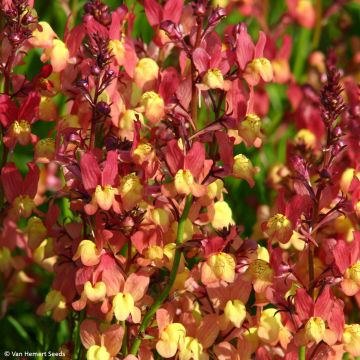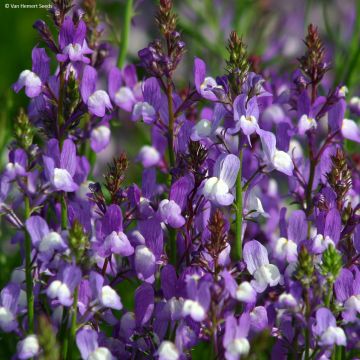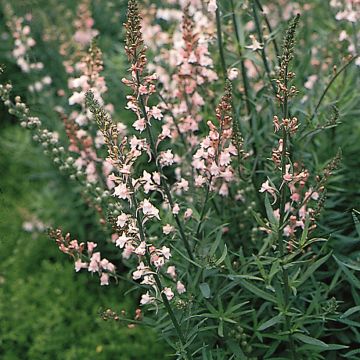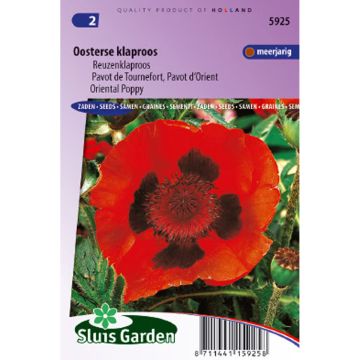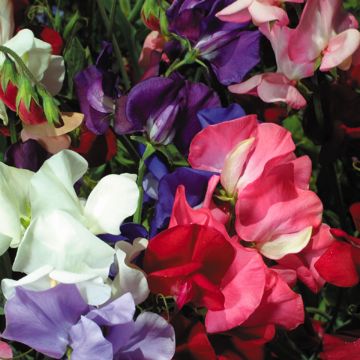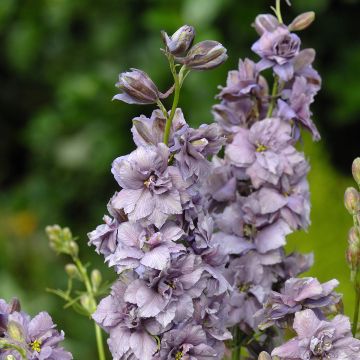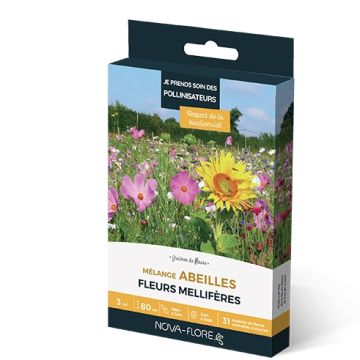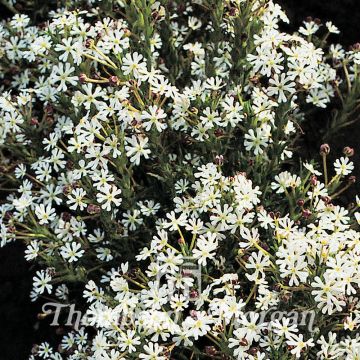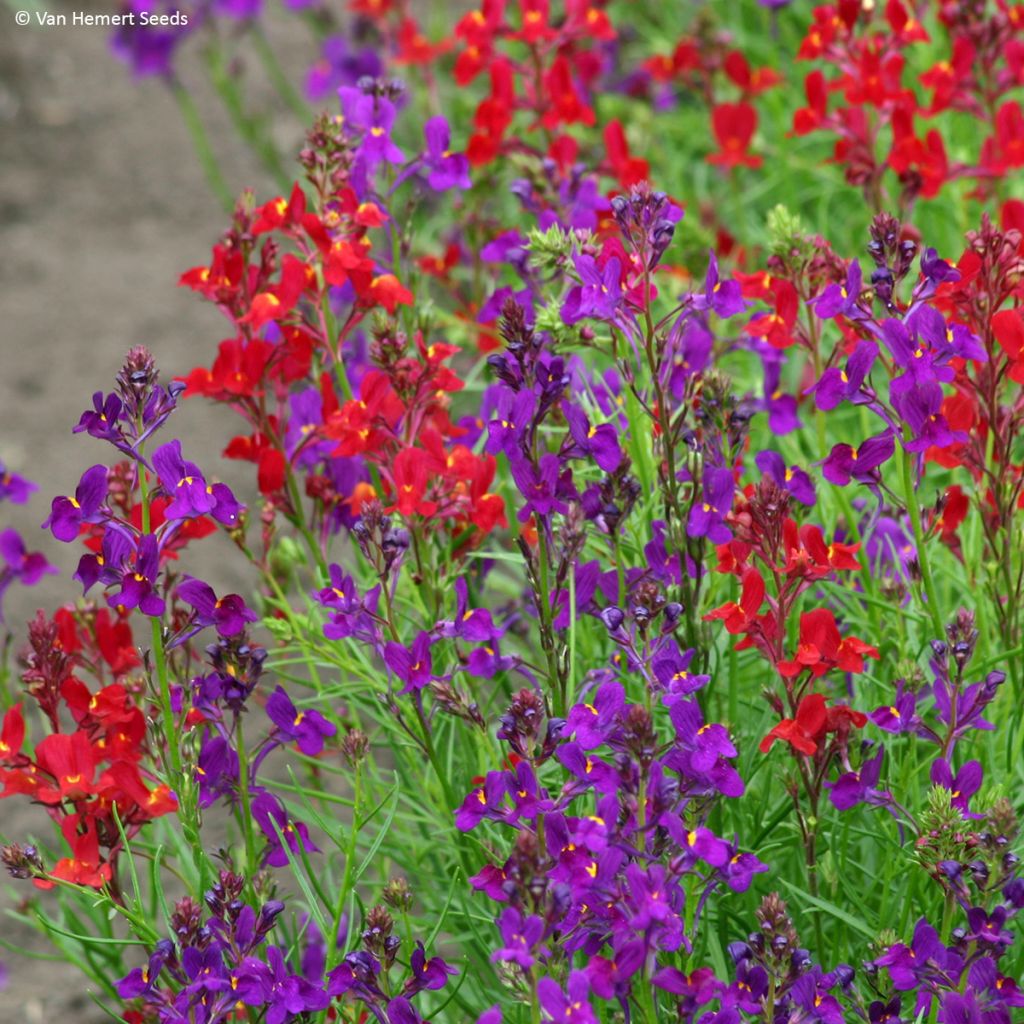

Linaria Rhythm & Blues - Moroccan toadflax seeds
Linaria Rhythm & Blues - Moroccan toadflax seeds
Linaria maroccana Licilia Rhythm & Blues
Moroccan toadflax, annual toadflax, Spurred snapdragon
This item cannot be shipped to the selected country
Dispatch by letter from €3.90
More information
Schedule delivery date,
and select date in basket
This plant carries a 6 months recovery warranty
More information
We guarantee the quality of our plants for a full growing cycle, and will replace at our expense any plant that fails to recover under normal climatic and planting conditions.
Seed-only orders are dispatched by sealed envelope. The delivery charge for seed-only orders is €3.90.
Does this plant fit my garden?
Set up your Plantfit profile →
Description
Linaria maroccana 'Rhythm & Blues' is a selection of two varieties of Moroccan Toadflax, in red and violet. A powerful alliance of colours that stands up to the summer sun in borders and rockeries. This mix of annuals can be sown directly in place in spring, in the sun and well-drained soil to provide a long summer flowering that begins 6 weeks later. The flowers are borne on long, slender stems and resemble snapdragons, but they are smaller, thinner, and long-spurred, infinitely graceful. Moroccan Toadflax also makes beautiful potted plants and bouquets.
Linaria maroccana is an annual herbaceous plant in the family Scrophulariaceae, or Plantaginaceae according to another classification. It is native to Morocco, but it has become naturalised in the southeastern United States, especially in California. This species enjoys sun, heat, and well-drained rocky or sandy soils.
The 'Rhythm & Blues' selection is particularly floriferous and easy to grow. Each plant forms a clump of 50-55 cm (20-22in) high and 20-25 cm (8-10in) wide in a few weeks, composed of branched stems bearing very thin, 3-4 cm (1-2in) long green leaves. In cooler climates, flowering occurs from June to September, sometimes earlier if sown under heated shelter from March. In milder climates, seedlings grow in autumn and flower as early as April, with flowering being halted by summer drought. Like Love-in-a-Mist, this toadflax alters its vegetative cycle according to the climate. The small, two-lipped flowers are tightly packed on long terminal spikes. They are loved by pollinating insects. Annual toadflaxes readily self-sow in the garden, in light soil, but not always true to the parent plant.
Much less known and used in our gardens than Love-in-a-Mist, Cosmos, or even their cousins the Snapdragons, Moroccan Toadflaxes are just as easy to grow and their airy flowering in various colours is enchanting. They are accessible to all gardeners and easy to grow in borders, beds, or rockeries. 'Rhythm & Blues' pairs perfectly with all other toadflaxes, perennial or annual. They are perfect for wild gardens, or 'cottage gardens', but also very useful for quickly filling flower pots. Their airy spikes are well highlighted when emerging among bushy perennials (fennel, 'Banana Cream' Shasta Daisy, red hot pokers, summer asters), ground-hugging plants (wall bellflowers, aubrietas), or low-growing shrubs in muted colours ('Powis Castle' Wormwood, Blue Glacier Spurge, 'Blanche' Gaura, lavender...).
Report an error about the product description
Flowering
Foliage
Plant habit
Botanical data
Linaria
maroccana
Licilia Rhythm & Blues
Plantaginaceae (Scrophulariaceae)
Moroccan toadflax, annual toadflax, Spurred snapdragon
Cultivar or hybrid
Other Graines de Linaires
Planting and care
Sow Moroccan toadflax from January to March on the surface of a well-drained seed compost. Do not cover the seeds. Place in a propagator or a seed tray enclosed in a plastic bag, at 20-25 °C (68-77°F) until germination, which usually takes 10 to 21 days. Light facilitates germination. Transplant the seedlings when they are large enough to handle, into 8 cm (3in) pots or trays. Gradually acclimatise the plants to cooler conditions for a few weeks before planting them outdoors, after all risk of frost, with a spacing of 23 to 30 cm (9 to 12in) between each plant.
You can also sow directly in the ground in spring, as soon as all risk of frost has passed, or in early autumn in mild climates. The soil should be cleared of all weeds beforehand, well worked, and possibly lightened with coarse sand and leaf compost. Since the seeds are very fine, it may be useful to carefully mix them with dry sand before sowing, as this makes it easier to scatter the seeds evenly. Thin out the seedlings if necessary, keeping one plant every 25 cm (10in).
Moroccan linarias and their hybrids thrive in well-drained, sandy or rocky, light soils, kept moist throughout the flowering period, and in full sun. Depending on your climate, these plants will flower all summer in moist soil, or in spring in soil which is dry during the summer.
Sowing period
Intended location
This item has not been reviewed yet - be the first to leave a review about it.
Flower seeds
Haven't found what you were looking for?
Hardiness is the lowest winter temperature a plant can endure without suffering serious damage or even dying. However, hardiness is affected by location (a sheltered area, such as a patio), protection (winter cover) and soil type (hardiness is improved by well-drained soil).

Photo Sharing Terms & Conditions
In order to encourage gardeners to interact and share their experiences, Promesse de fleurs offers various media enabling content to be uploaded onto its Site - in particular via the ‘Photo sharing’ module.
The User agrees to refrain from:
- Posting any content that is illegal, prejudicial, insulting, racist, inciteful to hatred, revisionist, contrary to public decency, that infringes on privacy or on the privacy rights of third parties, in particular the publicity rights of persons and goods, intellectual property rights, or the right to privacy.
- Submitting content on behalf of a third party;
- Impersonate the identity of a third party and/or publish any personal information about a third party;
In general, the User undertakes to refrain from any unethical behaviour.
All Content (in particular text, comments, files, images, photos, videos, creative works, etc.), which may be subject to property or intellectual property rights, image or other private rights, shall remain the property of the User, subject to the limited rights granted by the terms of the licence granted by Promesse de fleurs as stated below. Users are at liberty to publish or not to publish such Content on the Site, notably via the ‘Photo Sharing’ facility, and accept that this Content shall be made public and freely accessible, notably on the Internet.
Users further acknowledge, undertake to have ,and guarantee that they hold all necessary rights and permissions to publish such material on the Site, in particular with regard to the legislation in force pertaining to any privacy, property, intellectual property, image, or contractual rights, or rights of any other nature. By publishing such Content on the Site, Users acknowledge accepting full liability as publishers of the Content within the meaning of the law, and grant Promesse de fleurs, free of charge, an inclusive, worldwide licence for the said Content for the entire duration of its publication, including all reproduction, representation, up/downloading, displaying, performing, transmission, and storage rights.
Users also grant permission for their name to be linked to the Content and accept that this link may not always be made available.
By engaging in posting material, Users consent to their Content becoming automatically accessible on the Internet, in particular on other sites and/or blogs and/or web pages of the Promesse de fleurs site, including in particular social pages and the Promesse de fleurs catalogue.
Users may secure the removal of entrusted content free of charge by issuing a simple request via our contact form.
The flowering period indicated on our website applies to countries and regions located in USDA zone 8 (France, the United Kingdom, Ireland, the Netherlands, etc.)
It will vary according to where you live:
- In zones 9 to 10 (Italy, Spain, Greece, etc.), flowering will occur about 2 to 4 weeks earlier.
- In zones 6 to 7 (Germany, Poland, Slovenia, and lower mountainous regions), flowering will be delayed by 2 to 3 weeks.
- In zone 5 (Central Europe, Scandinavia), blooming will be delayed by 3 to 5 weeks.
In temperate climates, pruning of spring-flowering shrubs (forsythia, spireas, etc.) should be done just after flowering.
Pruning of summer-flowering shrubs (Indian Lilac, Perovskia, etc.) can be done in winter or spring.
In cold regions as well as with frost-sensitive plants, avoid pruning too early when severe frosts may still occur.
The planting period indicated on our website applies to countries and regions located in USDA zone 8 (France, United Kingdom, Ireland, Netherlands).
It will vary according to where you live:
- In Mediterranean zones (Marseille, Madrid, Milan, etc.), autumn and winter are the best planting periods.
- In continental zones (Strasbourg, Munich, Vienna, etc.), delay planting by 2 to 3 weeks in spring and bring it forward by 2 to 4 weeks in autumn.
- In mountainous regions (the Alps, Pyrenees, Carpathians, etc.), it is best to plant in late spring (May-June) or late summer (August-September).
The harvesting period indicated on our website applies to countries and regions in USDA zone 8 (France, England, Ireland, the Netherlands).
In colder areas (Scandinavia, Poland, Austria...) fruit and vegetable harvests are likely to be delayed by 3-4 weeks.
In warmer areas (Italy, Spain, Greece, etc.), harvesting will probably take place earlier, depending on weather conditions.
The sowing periods indicated on our website apply to countries and regions within USDA Zone 8 (France, UK, Ireland, Netherlands).
In colder areas (Scandinavia, Poland, Austria...), delay any outdoor sowing by 3-4 weeks, or sow under glass.
In warmer climes (Italy, Spain, Greece, etc.), bring outdoor sowing forward by a few weeks.

































